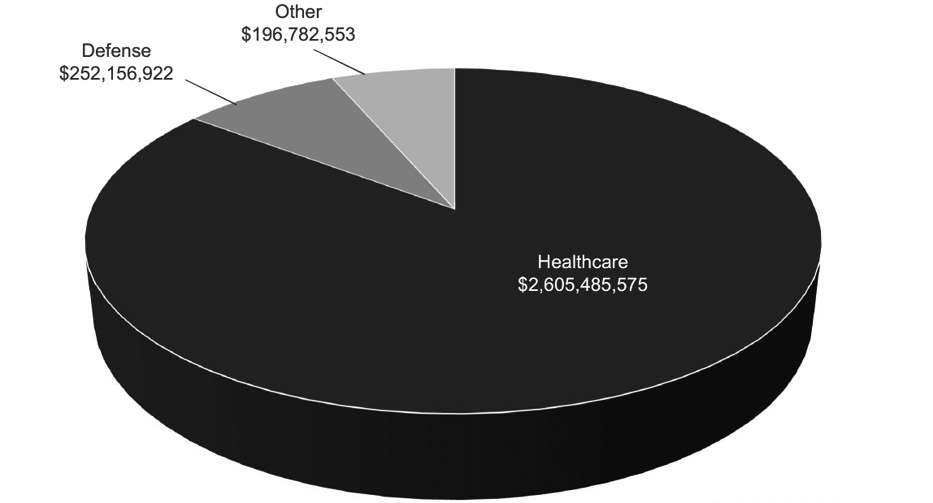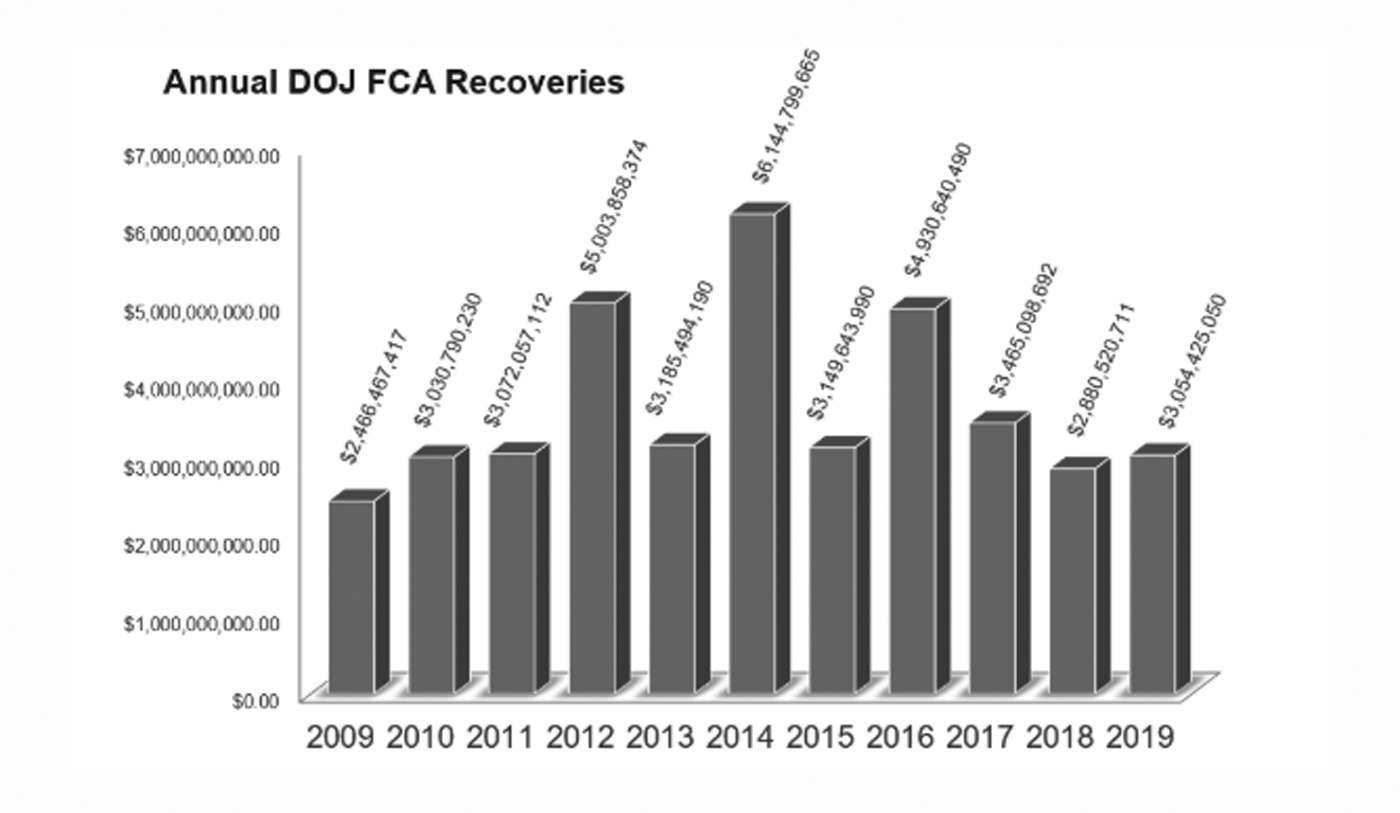The U.S. Department of Justice has released its annual False Claims Act statistics for fiscal year 2019. The author of this article discusses those statistics.
The U.S. Department of Justice ("DOJ") finally released its annual False Claims Act ("FCA") statistics for FY 2019.1 DOJ reports having recovered just over $3 billion in fiscal year ("FY") 2019, the overwhelming majority of which ($2.6 billion) came from Department of Health and Human Services ("HHS") matters. Healthcare recoveries have now exceeded $2 billion each year for 10 consecutive years.
According to DOJ's press release, FY 2019 saw particularly aggressive enforcement against pharmaceutical manufacturers, particularly companies that manufacture opioids. DOJ also recovered $252 million in defense-related matters and $196 million in what DOJ classifies as "Other" matters (that is, any matters not involving HHS or the Department of Defense).
GOVERNMENT CONTRACTING LAW REPORT

FY 2019 saw a slight uptick from the 10-year low of $2.9 billion recovered in FY 2018, but still marks the second-lowest total since the 2010 Affordable Care Act ("ACA") amendments to the FCA, which strengthened the statute's qui tam provisions. FY 2019 also saw a slight increase in the overall number of new FCA matters filed, with 782 new matters (146 non-qui tams and 636 qui tams) filed, up from 762 in FY 2018.

TAKEAWAYS
One big takeaway from DOJ's FY 2019 FCA statistics is the reduced role that relators appear to be playing in DOJ's recoveries. Although the overall number of new matters increased, the number of new qui tam matters fell for the fourth straight year, hitting an eight-year low with only 636 new relator-brought cases.
The total amount paid out in relator share awards hit a 10-year low, with relators bringing in between $265 million and $272 million in FY 2019, by far the lowest total since the ACA amendments.2 Since 2009, relator share awards had never previously dipped below $340 million.
Unsurprisingly given this development, qui tam actions also make up a smaller portion of the total dollars recovered. Qui tam actions accounted for only 72 percent of the total recoveries in FY 2019, the third year in a row we have seen a reduction on that front. The drop is particularly notable on the healthcare side, where relator-brought actions have historically accounted for the lion's share of healthcare recoveries.
But in FY 2019, only 73 percent of healthcare recoveries came from qui tam actions. DOJ recovered nearly $700 million in healthcare cases brought directly by DOJ, by far the highest total since 2006. This number was driven by several large recoveries out of the District of Massachusetts, stemming from an investigation of pharmaceutical manufacturers related to copay assistance programs.
The drop in qui tam recoveries will be an interesting trend to watch in coming years. Is the decrease due, at least in part, to courts more closely scrutinizing materiality post-Escobar? What impact does DOJ's increased focus on weeding out meritless qui tam cases through its 31 U.S.C. § 3730(c)(2)(A) dismissal authority have on these numbers? Will we continue to see relators play a smaller role?
As for the defense industry, DOJ bounced back in a big way in FY 2019. The $252 million in defense-related recoveries marked a nearly 150 percent increase from the paltry $107 million recovered in FY 2018. As DOJ's press release notes, settlements with five South Korean companies totaling $162 million made up a large chunk of this total.
Meanwhile, "Other" recoveries continued to decline, which does not come as much of a surprise as we move further away from the financial crisis that brought substantial FCA enforcement against the financial services industry, and the mortgage industry in particular.
Footnotes
2. DOJ's press release states that relator share awards were $265 million, but DOJ's statistics lists the amount as $272 million.
Originally Published by Lexis Nexis
The content of this article is intended to provide a general guide to the subject matter. Specialist advice should be sought about your specific circumstances.
